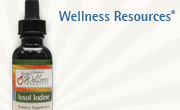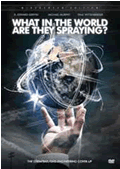PART 10
By
Kelleigh Nelson
August 7, 2011
NewsWithViews.com
Prescription Drugs
When we go to our doctors, we obviously want an end to whatever problem we're experiencing. The best bet for help is an older doctor. A study at the Medical College of Wisconsin Researchers found that physicians with fewer than 10 years of experience described almost 25% of their patients as "difficult," whereas more seasoned doctors said the same of just 2% of their patients. If you have a stubborn health issue or a prescription drug issue, then a physician with some years is preferable. Why? Because younger doctors have a tendency to medicate every problem and less and less time to read patient charts or listen to their patients. Many medications increase problems rather than solving them, and some can cause not only horrible side effects, but death. We assume that the drugs the doc prescribes have been carefully tested to make sure they are both safe and effective. Most times they are. Yet sometimes the drugs cause more problems than they solve. Adverse drug reactions kill tens of thousands of people annually; one widely cited study published in the Journal of the American Medical Association (JAMA) in 1998 puts the number at more than 100,000, but other sources state over 320,000 die per year from FDA approved drugs. [Link]
According to the U.S. General Accounting Office, close to 51% of FDA-approved drugs have serious adverse effects not detected prior to approval. Each year prescription drugs injure 1.5 million people so severely they require hospitalization. In 2007, 149 Americans died from tainted heparin (a blood thinner) imported from China. China is now the largest supplier of pharmaceutical chemicals, actually hundreds of tons annually to the world, most especially for generic drugs. When Baxter Healthcare sourced cheap heparin from China, it carried out all the legally required tests. However, those tests were unable to detect the contaminant that caused fatal allergic reactions and the dangerous drug slipped through. (See Part 9 of this series). Small hard-to-detect flaws such as trace impurities caused by unhygienic practices can easily be undetected.
By law Western pharmaceutical firms must buy from certified manufacturing plants only. But with so many steps in between and certification only at the last stage, it doesn't mean the chemicals are good. Many pharmaceutical industry experts in China admit that up to 25% of ingredients purchased in China by Western companies come from unknown sources.
The FDA (Food and Drug Administration) has established an office in China and is increasing investigations of the plants that export to the U.S., but it can assess only one site in every 13 years. Needless to say the FDA has failed Americans many times over and now that these drugs are manufactured in China, the potential for a large scale catastrophe in the USA is growing. In 2002, the U.S. imported $331 million of pharmaceutical chemicals from China, but by 2010 it was $1.74 billion and rising. So, we're looking at a future that might be like Russian Roulette with prescription drugs made in China and it is truly a growing concern.
The FDA oversees, food, drugs, medical devices, vaccines, blood and biologics, animal and veterinary, cosmetics, radiation emitting products, and tobacco products. The FDA is not the savior of America's health and well being. [Link] Over the last 30 years, 20% of the drugs approved by the FDA have been recalled as "bad" drugs.
To help ensure the status quo on U.S. drug regulation and pricing, the pharmaceutical industry has thousands of lobbyists in Washington, DC that lobby Congress and protect their interests. [Link] The pharmaceutical industry spent $855 million, more than any other industry, on lobbying activities from 1998 to 2006, according to the non-partisan Center for Public Integrity. [Link]
The list of drugs with horrendous side effects grows longer every year. Where pharmaceutics have been shown to cause side-effects or death, civil action has occurred, especially in countries where tort payouts are likely to be large. Due to high-profile cases leading to large compensations, most pharmaceutical companies endorse tort reform, but tort reform can and will increase negligence. Tort reform won't lower health care costs and it's socialism. There are many reasons why patriots and tea party activists understand that tort reform is devastating to Americans.
How can you determine if you are dealing with a BAD DRUG? Here are the early warning signs:
1) The drug has been recalled or given a black box warning which means serious side effects. List of drugs with a black box warning.
2) The drug is in litigation with numerous lawsuits against the drug company. Drug litigation by lawyers gives us an early warning sign about a bad drug. Drug litigation can uncover secret information about adverse drug side effects which drug companies hide from the public. Computer Search Engine Listing of Drugs in Litigation. Click here for Unsafe drugs in litigation (1.5 Million hits).
3) The drug has been banned in other countries.
Prescription Drugs That Kill
1. Darvon/Darvocet - pain killer - the drug has been causing deaths in the U.S. since the 1970’s when it was cited as the cause of 589 deaths and called “the most dangerous prescription drug in the U.S." There are probably hundreds of thousands of Americans who have either had a heart attack or heart arrhythmia issues from these drugs. Both Darvon/Darvocet were finally recalled in the U.S. on November 19, 2010 in compliance with a request by the FDA for its being linked to heart arrhythmias, and other side effects such as suicide, overdose and death.
2. Avandia - used for a treatment in Type 2 diabetes - increases heart attack risk by 43% and is linked to deadly side effects such as congestive heart failure, heart attacks and strokes. The FDA now limits the drug use to "last resorts." GlaxoSmithKlein, according to Bloomberg News, paid $250 million dollars to settle numerous claims of injury and death related to its use.
3. Yaz/Yasmine - new birth control pill that had the added benefits of reducing acne, and reducing PMS. Young girls have died from blood clots, have been having strokes, and coming down with gall bladder disease. The drug has been linked to over 50 deaths since its launch. Through early 2011, there have been over 4000 lawsuits related to its use filed in state and Federal courts. Other severe side effects include heart attacks and liver cancer. The F.D.A. has made the drug’s manufacturer redo deceptive TV commercials and ordered the recall of 33,000 boxes of the drug in November 2009, due to defective manufacturing. Despite all these dangers, it is still on the market today.
4. Accutane - acne drug - deadly and dangerous side effects including depression, inflammatory bowel disease, and suicide. Roche stopped selling it in the US in 2009 because of defending large lawsuits and having spent 56 million and still more suits pending.
5. Nuvaring - birth control device - linked to almost half a dozen deaths, as well as a large number of life threatening blood clots, heart attacks, and strokes. The number of lawsuits seeking compensation against Schering-Plough related to Nuvaring injuries has ballooned to over 300; yet the sales continue, with most people completely unaware of the risks.
Past and Present Dangerous Drugs
Thalidomide was introduced in the late 50s as a sedative for morning sickness. It caused horrendous birth defects. Worldwide victims are estimated at 10,000 to 20,000.
Hormone Replacement Therapy (HRT's) I remember years ago seeing a young female physician that told me HRT's would prevent heart problems, Alzheimer's, and osteoporosis. I looked at her and said, "Yeah? Well to me it's cancer in a bottle." She was pretty irked that I refused her medication, but not too many years later I was glad I did. HRT's have actually increased the risk of heart disease, strokes, emboli and breast cancer. I've always been hesitant to take prescription drugs, wondering if 10 years later I'd wake up with a third eye in my forehead.
Anti-Cholesterol Drugs
Statin drugs like Lipitor, Crestor, Baycol, and Zocor all have side effects. Baycol has been recalled because it causes muscle damage which releases muscle debris into the bloodstream which then clogs up the kidneys and causes renal failure. Lipitor causes memory loss, muscle damage, pain and weakness, and Crestor has the greatest kidney toxicity causing muscle breakdown to clog the kidneys.
Vioxx, Celebrex, Bextra
Recent controversies have involved Vioxx because of an increased risk of heart attack and stroke, and instant cardiac death. According to the FDA Vioxx caused 160,000 deaths from heart attack and stroke. Forty five thousand have sued Merck and Merck has spent a billion on legal fees. Merck’s strategy is to fight every case by bringing it to trial and drag out the proceedings. On November 9, 2007, Merck agreed to pay $4.85 billion to settle all of the court claims.
Anti-Depressants
Another series of drugs with massive problems are SSRI antidepressants, which have a huge list of side effects including suicide and violent aggressive behavior. Some 200 legal actions have been filed against Eli Lilly, Pfizer, and GlaxoSmithKline, the manufacturers of Prozac, Zoloft, and Paxil to recover for suicides or homicides by patients. The lawsuits claim that the companies knew about, but hid the documents which showed increased risk of akathisia, a form of agitation causing suicide and violence. Here is a list of school shootings where the perpetrator was medicated with SSRI antidepressants. Prozac has been prescribed so often in the UK that it is now in their water supply and cannot be removed. [Link]
Ritalin
Attention Deficit Disorder (ADD) and Attention Deficit Hyperactive Disorder (ADHD) are both often treated with Ritalin. The use has skyrocketed since the 80s when this drug became available for attention and activity in children that has no biological origin. Ritalin is often referred to as "Kiddie Cocaine" for good reason. Long-term Ritalin effects have been linked to brain development abnormalities similar to those found with cocaine use. While research now indicates adverse long-term Ritalin side effects physically, other studies show that Ritalin use does not make an impact on behavior in the long run. There are dozens of adverse effects from this drug given mainly to children, but now also marketed to adults.
Boniva and Fosamax
These two drugs are used for the prevention of bone loss from osteopenia (slightly below normal bone density) and osteoporosis. Boniva is a once a month drug made by Roche and Fosamax is taken daily. In a patient brochure that Merck produced in 1997, one headline reads, "Menopause is the single most important cause of osteoporosis." The FDA called the statement false and Merck had to stop distributing literature with these statements. The marketing plan was to get every post menopausal woman on Merck's drug Fosamax telling them that it would prevent them from getting osteoporosis. They didn't market however to more elderly women that were bent over from the disease and probably at the advanced age could have benefited from the drug. These medications taken at earlier ages pose frightening risks.
Any woman that had bone density scans that showed lower bone strength with osteopenia, but not osteoporosis, were urged to get on these drugs. So many women started taking these bisphosphonates at age 50. The best fracture prevention however is when women only take the drug if they develop osteoporosis. The side effects of these drugs can be miserable. Stomach pain, heartburn, and acid reflux are major complaints and gastroenterologists are seeing more and more post menopausal women for these complaints while they're on these drugs. Another common complaint is severe muscle and joint pains. British researchers also found that the risk of esophageal cancer doubled after taking these drugs for three to five years .
Another side effect is femur fractures. The femur is the strongest bone in the human body. Bisphosphonates work by reducing the activity of the cells which normally break down bone. But suppressing the bone's normal cycle of breakdown and buildup appears to not be healthy in the long run. Basically this means the old cells of the bone are not sloughed off; new cells are just packed on top of them. Many women have complained of bone and joint pain which most likely is the result of multiple micro-fractures. The pathologic abnormalities in bone structure that leads to increased bone density on the density scans from these drugs fools people. Paradoxically, this dense bone is weaker, brittle and prone to pathological fracture at the mid-shaft level of the femur. A fracture at this mid-femur location is highly characteristic of a Fosamax induced fracture and these mid-femur fractures are very difficult to heal even with the best treatments.
Another debilitating side effect of Fosamax is jaw necrosis, a painful and potentially disfiguring condition where the jaw bone deteriorates and dies. Complications may result in jaw infections and exposed bone inside the mouth. The jaw necrosis caused by Fosamax, also known as osteonecrosis of the jaw, ONJ, dead jaw or bis-phossy jaw, could result in permanent decay of the jaw bone. Stopping the drug does not reverse the jaw damage and there is no easy or effective treatment for ONJ. Merck faces an onslaught of more than 900 cases awaiting litigation and this is only for ONJ.
We have been hoodwinked by the marketing ads with Sally Fields. As mid-femur fractures and ONJ become more common, it is likely these drugs will be banned. There are alternatives for these drugs; proper weight bearing exercises, walking, healthy diets and good calcium supplements that contain vitamin K and magnesium.
This is by no means a complete list of problem medications. There are hundreds and thousands of drugs on the market with adverse side effects and major problems for the consumer. Ask your pharmacist for a list of side effects on every script you order. Check the drugs on the internet before you take the first dose. In today's society, we must be our own best advocates.
Government Experiments
Throughout history our government has had no qualms about experimenting on its citizenry. The latest experiment started in 2007 and is being conducted on black women in South Africa by the British government, the US government and population-reduction advocate Bill Gates. The drug being tested is an AIDS prevention drug called Tenofover. Young women are told to apply this gel to their sexual organs 12 hours before having relations with their AIDS infected partners. Remember folks, they're testing this and using human beings as lab rats! The effective rate was only about 35%, which means hundreds of women have already been given a death sentence. Even worse, their blind studies included a placebo group!
This year the group is saying the effective rate is now nearly 60%, but that still leaves a large number of deaths from this drug testing. Taxpayer funding of this Nazi style testing is beyond belief. After 1947’s development of the Nuremberg Code of justice resulting from the Nazi war crimes trials after WWII, they are most likely breaking the law. The Nuremburg Code includes 10 principles to guide physicians in human experimentation. Yet, South Africa's young black women are exempt? And the international community is lauding these efforts in the fight against HIV? The teams leading these experiments in South Africa were actually awarded the Drug Information Association President's Award for outstanding Achievements in World Health! Human life means nothing to scientists, governments and drug companies...to them humans are simply guinea pigs and lab rats.
Conclusion
Even acetaminophen, trade name Tylenol, is dangerous to our health. Doses of acetaminophen greater than the recommended doses are toxic to the liver and may result in severe liver damage. The potential for acetaminophen to harm the liver is increased when it is combined with alcohol or drugs that also harm the liver.
| Subscribe to the NewsWithViews Daily News Alerts! |
The question remains, are we willing to be guinea pigs with the newest drugs on the market or are we going to do some research on their side effects prior to even purchasing the drug? Are we going to find alternatives that are far safer than the drugs the pharmaceutical companies market and advertise on television? Or, are we going to continue to be accomplices in their draconian experiments on human beings? Yes, they're hard questions...and yes we want to trust our doctors. As American citizens we must, especially in the light of Obamacare, take personal responsibility for our own healthcare and therapies and do the research before swallowing any pill your doctor orders for you.
Click here for part -----> 1, 2, 3, 4, 5, 6, 7, 8, 9, 10,
© 2010 Kelleigh Nelson - All Rights Reserved
Sign Up For Free E-Mail Alerts
Kelleigh Nelson has been researching the Christian right and their connections to the left, the new age, and cults since 1975. Formerly an executive producer for three different national radio talk show hosts, she was adept at finding and scheduling a variety of wonderful guests for her radio hosts. She and her husband live in Knoxville, TN, and she has owned her own wholesale commercial bakery since 1990. Prior to moving to Tennessee, Kelleigh was marketing communications and advertising manager for a fortune 100 company in Ohio. Born and raised in Chicago, Illinois, she was a Goldwater girl with high school classmate, Hillary Rodham, in Park Ridge, Illinois. Kelleigh is well acquainted with Chicago politics and was working in downtown Chicago during the 1968 Democratic convention riots.
E-Mail: proverbs133@bellsouth.net












 Share
This Article
Share
This Article




